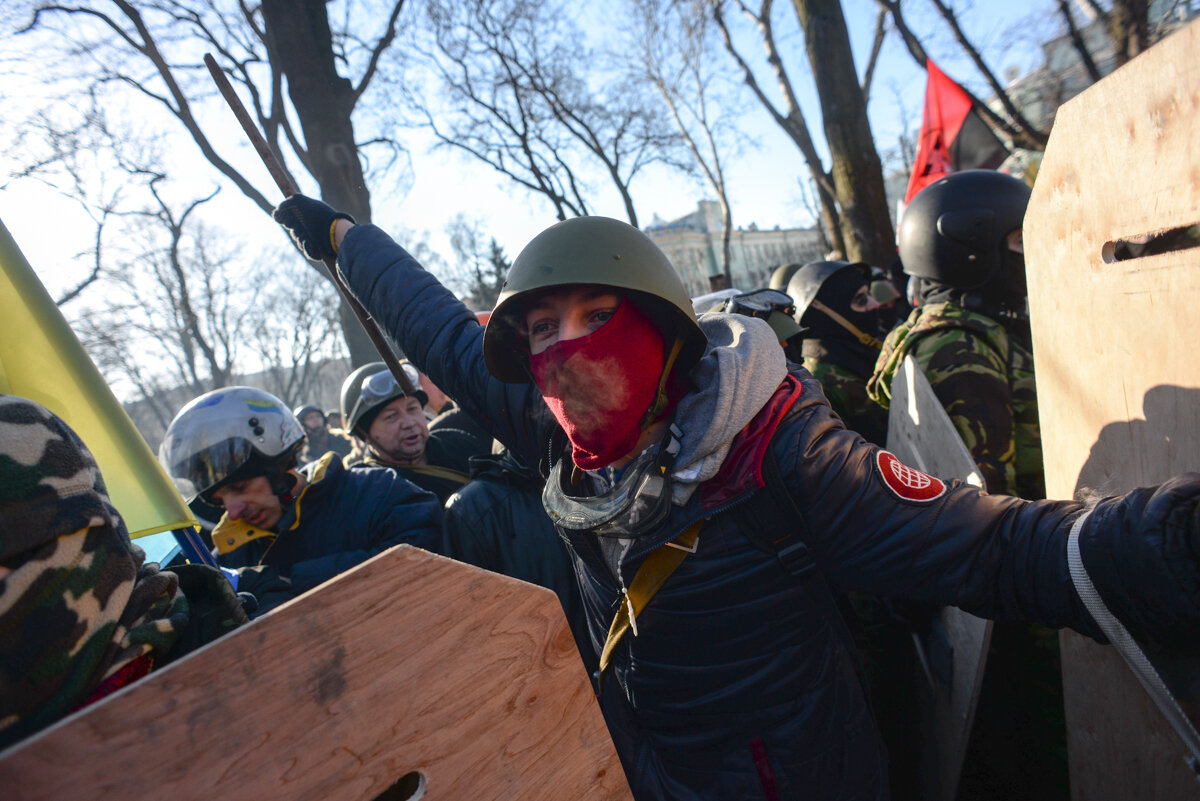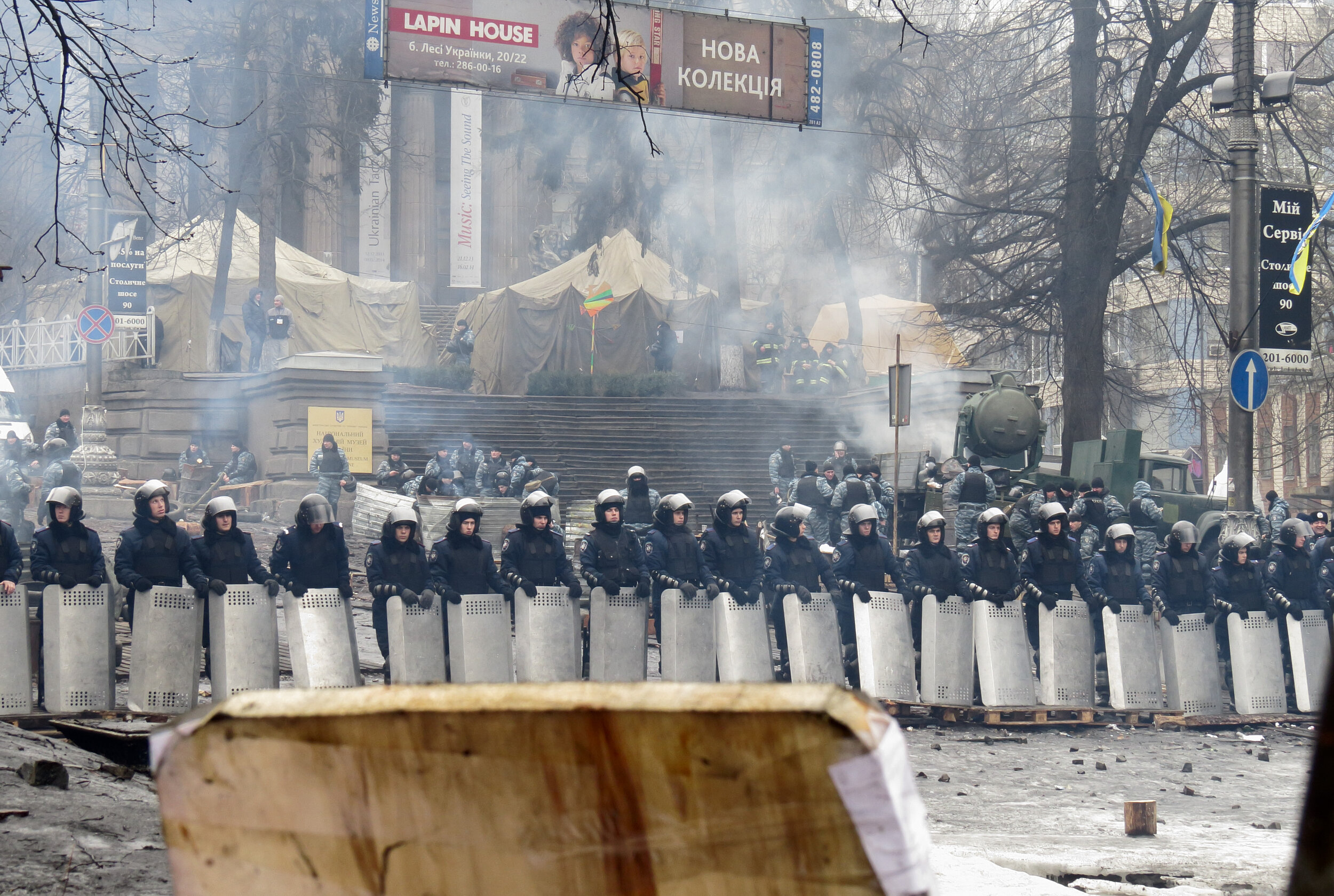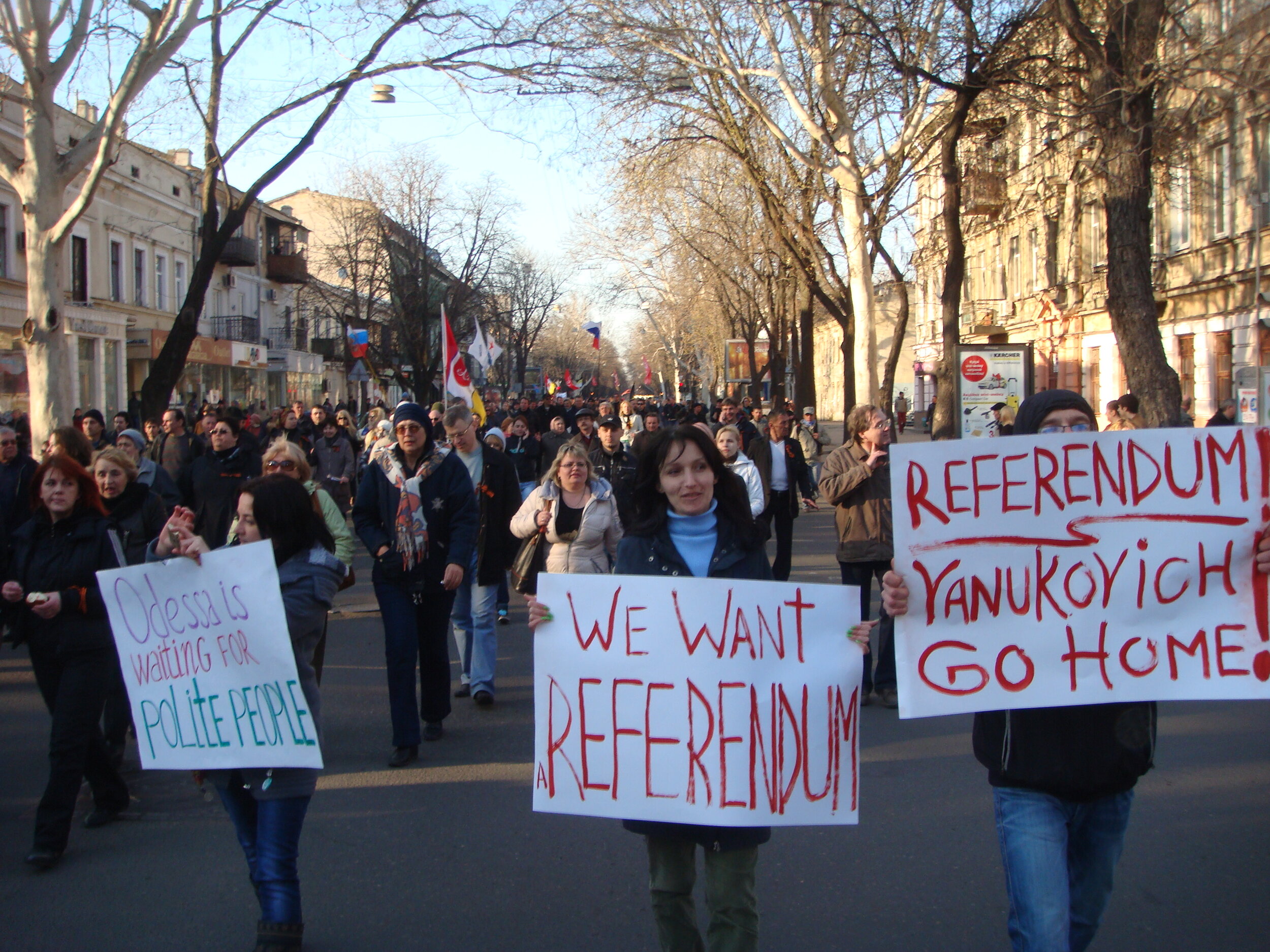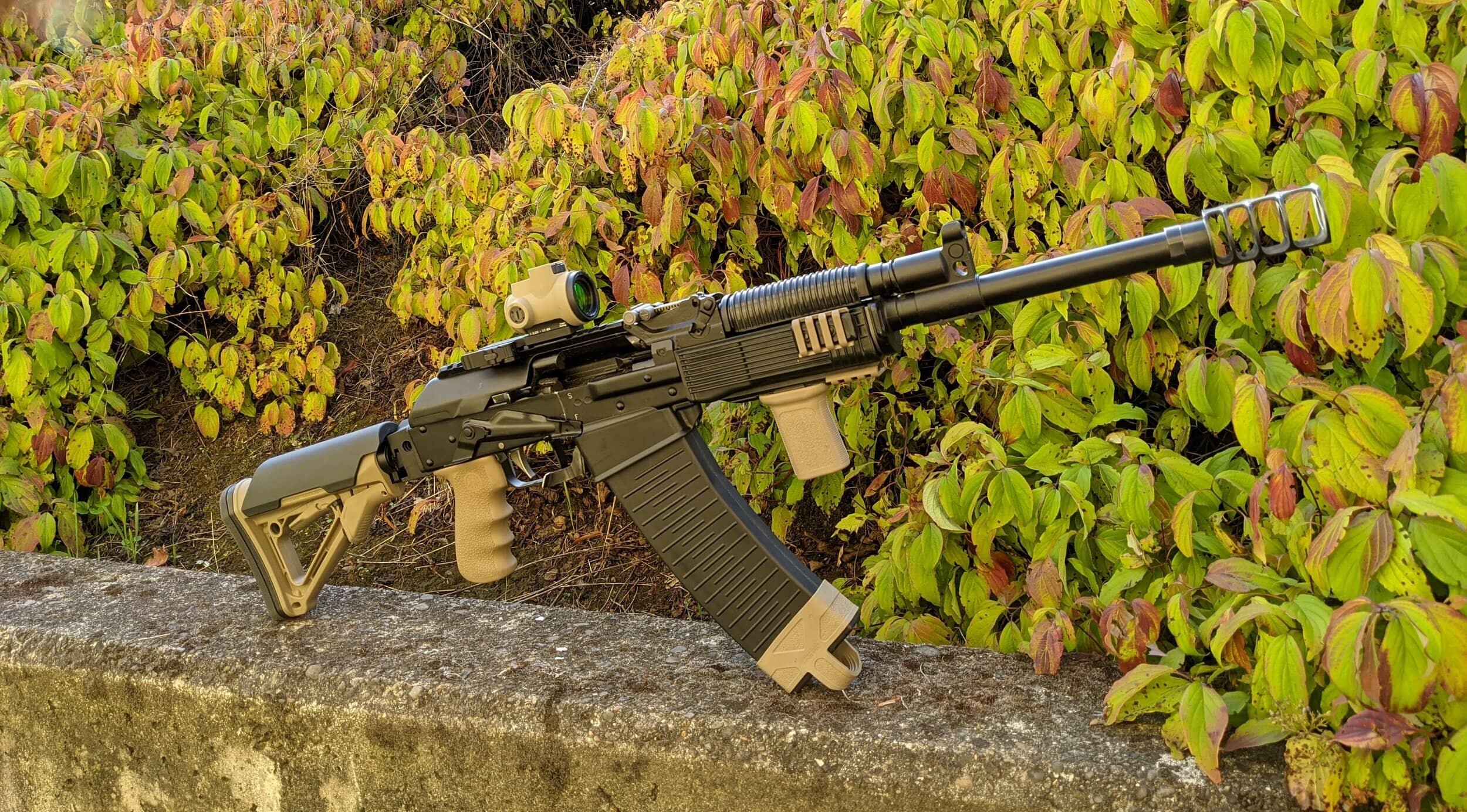Feat of the Week: The Banned VEPR-12
This week’s gunsmithing feat is a VEPR-12 with a ton of custom gunsmithing work. It’s always a pleasure to work for a friend—especially a friend with an increasingly rare Russian shotgun. In this blog post, we will share all the machining work we did and discuss why VEPRs were banned from import in the United States. So let’s get started!
The Banned VEPR-12
MAKE/MODEL: Molot VEPR-12
CALIBER: 12 Gauge
Optic: Trijicon MRO
Stock from Magpul
Trigger from ALG Defense
Muzzle Device from JMac Customs
The Gunsmithing Story
These 12 gauge semi-auto shotguns, some claim, are the best on the market. Meant for self-defense, hunting, and sport, shooters of all types love the familiar design. The VEPR-12 is modeled after the infamous AK-47 rifle and built on the RPK receiver. Chrome lined in multiple places, the VEPR shotgun is incredibly durable in harsh conditions and resistant to corrosion. VEPR-12s are produced at the Molot factory in Russia—established in 1941 to produce the PPSh-41 machine guns during World War II—and are known for both their reliability and high-quality production. Beginning in 2015, Molot firearms were sold and imported in the United States exclusively by the FIME Group under the VEPR brand.
The VEPR shotgun was created to compete with the Saiga-12. But the VEPR-12, unlike the Saiga, doesn’t have an adjustable gas system. Its fixed open port gas system allows the gun to easily handle most loads without the need for manual adjustment. The VEPR also has several features which users prefer such as the ambidextrous safety, bolt hold open on the last shot, and an easier magazine feeding system with a mag-well which eliminates the “rock and lock.”
This VEPR belongs to one of our close friends and customers—also the owner of the Tiger Striped AR-10—who asked us to do quite a bit of custom gunsmithing work on it. First, we cut the barrel down. In order to meet the overall length requirement, we threaded the freshly cut barrel for a muzzle device. We also gave the barrel internal threads for chokes. Then, we pin and welded the muzzle device on. Finally, we made a custom choke removal tool to operate through the new muzzle device. Our machines got quite a bit of time with this VEPR.
Banned for import by the federal government in 2017, the Russian-made VEPR-12s are becoming collector’s items and getting harder and harder to find these days—though we do have two currently checked in for gunsmithing work. At the time of the announcement, the FIME Group had only 400 VEPR-12s remaining in the United States for sale.
But why did they get banned in the first place? The reason has to do with the United States’ foreign policy on Russia’s annexation of Crimea.
The Annexation of Crimea
Crimea has always been a contested part of the world. Due to the nature of its location—with Ukraine to the north and Russia to the east—it has always been an area where various countries seek to exert their power. Crimea has changed hands countless times over the last several hundred years—being ruled by Turkey, the USSR, Ukraine, and even being autonomous at various points in time.
In 1954, Russia transferred control of Crimea to Ukraine who was a member of the USSR at the time. But when the Soviet Union collapsed and Ukraine became an independent nation in 1991, Crimea operated as a constituent entity independent of Ukraine.





Crimea’s situation changed again in February 2014 after Ukraine experienced a violent revolution ousting the president and overthrowing the government. Russia declared the new government illegitimate, and Russian sympathizers in southern and eastern Ukraine—including Crimea—protested the revolution. The ousted president fled to Russia and petitioned Putin to send troops to create law and order in Ukraine.
In the same month, unmarked Russian troops with support from local pro-Russian separatists invaded Crimea and installed a pro-Russian government within two days. Then, the new government held a referendum resulting in the reunification of Crimea with Russia.
Along with the United States and the United Nations, many Ukrainians held that this vote was illegal and illegitimate. So, in March 2014, after Russia formally annexed Crimea, President Obama issued an executive order which stated that Russia’s actions in Ukraine and Crimea were a threat to United States’ national security and foreign policy. The United States imposed import sanctions on several Russian companies as retaliation.
It is important to note that while much of the West saw this as an act of Russian aggression, the majority of Crimea supported the referendum as the majority of the population is ethnically Russian and Russian is their native language.
The VEPR Ban
The initial import sanctions in 2014 didn’t include the Molot factory or the VEPRs, but it did include the Kalashnikov Concern—maker of the AK platform, the Saiga-12, and the manufacturer of 95% of small arms in Russia. The sanctions that prevented the sale of new Kalashnikovs in the United States actually opened up the market for Molot’s VEPR shotguns to take over. In fact, just a year after the Kalashnikov ban was put into place, The FIME Group began selling Molot’s VEPRs in the United States. The import sanctions also gave American AK-style manufactures a boost in the U.S. market as well.
But, in 2016, the United States government caught wind that the Kalashnikov Concern had advised a foreign company to use Molot to falsify invoices to get around the import sanctions. This led the U.S. Department of Treasury to believe that Molot was acting as a front for the Kalashnikov Concern.
Additionally, that same year, Molot was for sale, but the requirements to participate in the auction were difficult for most companies to meet. The buyer needed to have a firearms manufacturing license and to be able fulfill Molot’s Russian defense contracts. Many financial experts suggested that Kalashnikov Concern was the only entity capable of fulfilling both requirements—remember the company comprises 95% of all small arms manufacturing in Russia.
Given these two findings in 2016, the United States Department of Treasury, Office of Foreign Asset Controls added Molot to the import sanctions list in 2017. This effectively banned the VEPR-12 and other Molot firearms from import.
Will we ever see new VEPR-12s in the United States again? It’s unlikely. The United States government claims that the sanctions will remain in place until Russia ends their aggression in Ukraine and Crimea. These sanctions, they say, create pressure on Russian to work toward a diplomatic solution. But Russia continues to administer Crimea—using Russian time and Russian money—and it doesn’t seem like they’re willing to change their stance anytime soon. In fact, the Prime Minister of Russia asserts that Crimea has become fully integrated with Russia. And in 2018, Russia built a bridge from Russia to Crimea and installed a security fence between Crimea and Ukraine.
So, new Russian VEPRs seem to be a fool’s dream at this point. Crimea river that the VEPRs are banned. You’ll just have to cough up more money to get your hands on one. And it’s probably worth it. These things are amazing.
Next Up
We hope you enjoyed this week’s gunsmithing feat. Thank you for following along! Our next feature will be posted Monday, October 26th at 9am. Comment for any content you want to see.
If you loved the services you saw today, check out our online store! You can start shopping by clicking here. Or drop us a message here. We look forward to meeting you and gunsmithing for you
Please subscribe to our blog below and don’t forget to follow us on social media!
Sources:
https://fimegroup.com/molot/
https://fimegroup.com/shotgun/vepr-semi-auto/
https://www.k-var.com/molot-vepr-12-gauge-semi-auto-tactical-shotgun
https://www.thetruthaboutguns.com/sanctions-end-supply-russian-made-vepr-12-02-shotguns/
https://blog.k-var.com/news/politics/closer-look-molot-sanctions/
https://fimegroup.com/media/fime-group-reports-only-400-vepr-12-shotguns-remain-for-us-sale/
https://www.gunsamerica.com/digest/treasury-department-adds-molot-vepr-import-ban/
https://www.ammoland.com/2017/07/vepr-ban-video/#axzz6b9KBFtaf
https://en.wikipedia.org/wiki/Kalashnikov_Concern
https://en.wikipedia.org/wiki/Crimea#Crimean_Khanate_(1449%E2%80%931783)





